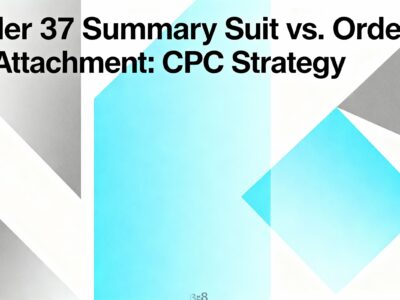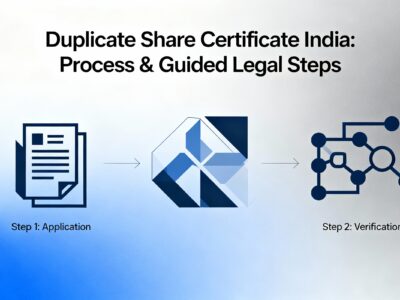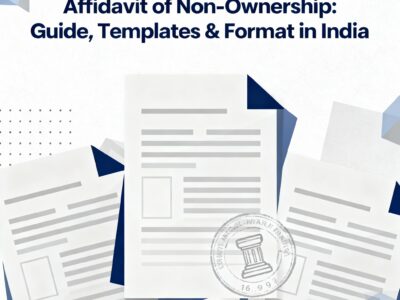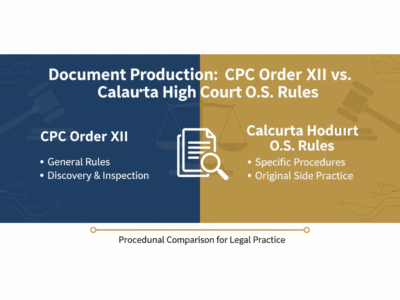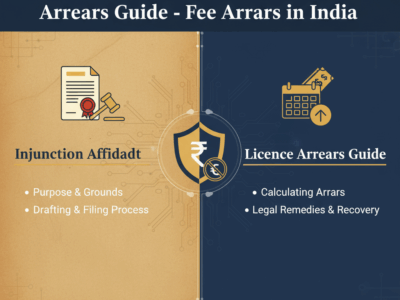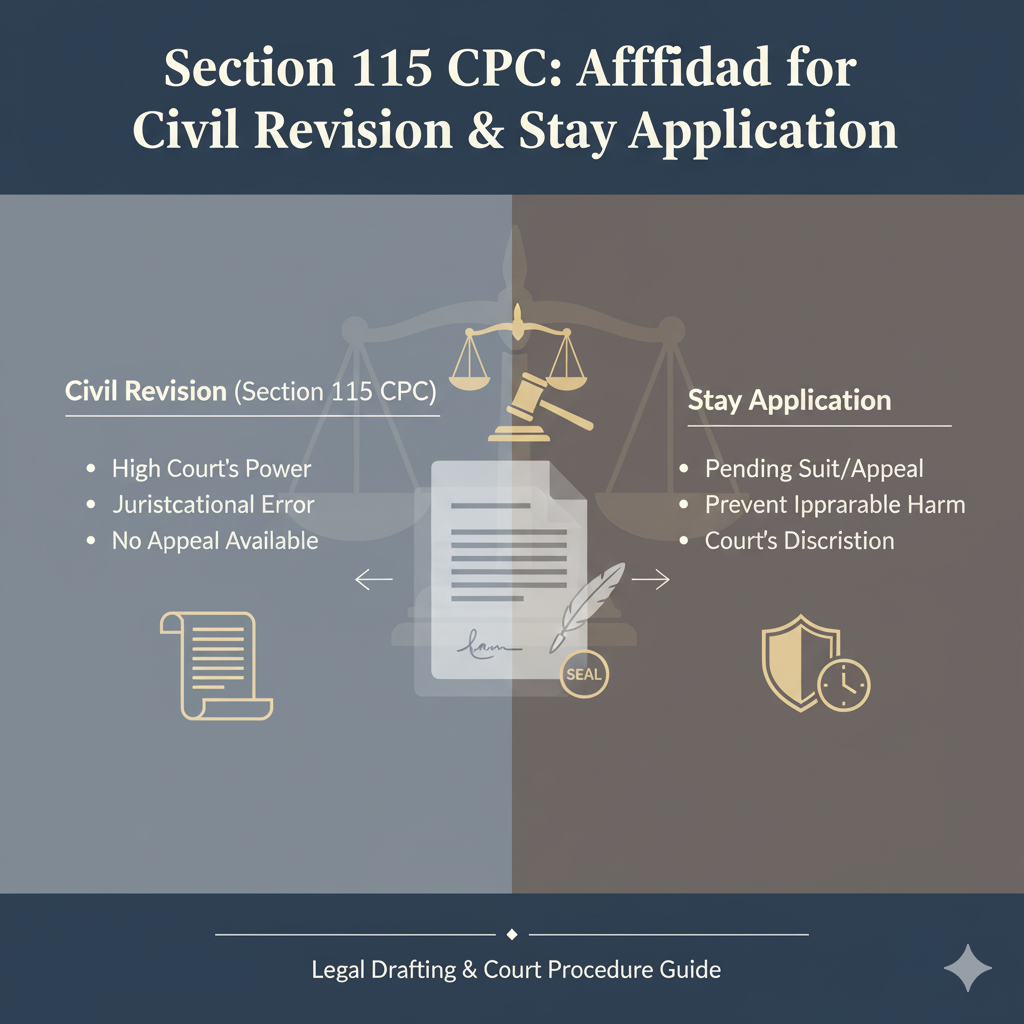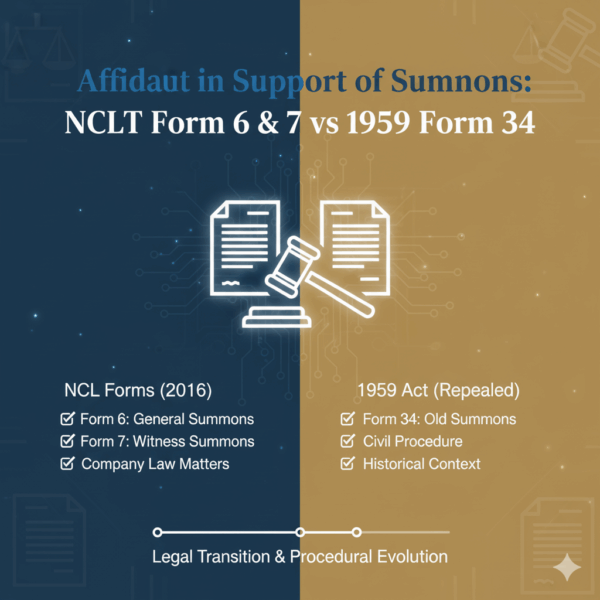Being improperly joined in an appeal without your consent is a serious procedural defect. This analysis explores the legal remedy for removing a party from an appeal, focusing on the critical distinction between “striking out” for misjoinder under Order 1 Rule 10(2) CPC and “withdrawal” under Order 23 Rule 1. We examine the precedent affidavit, the foundational role of the Vakalatnama, and the step-by-step procedure to rectify the court record.
Misjoinder in Appellate Proceedings: Party Removal, Affidavits, and the Vakalatnama
Analyzing civil procedure often starts with a practical precedent. An affidavit for removing a party from an appeal provides a clear case study. This document is not a standalone application; it is a sworn statement of facts. It supports a formal motion to strike a party's name from the court record.
Deconstructing the Precedent Affidavit
The precedent document contains several legal averments, each with a specific procedural function. Examining them shows the legal strategy.
1. The Cause Title and Preamble
The document begins "IN THE HON'BLE CITY CIVIL COURT" and specifies "Appeal No...". This text, the "cause title," establishes the court and the litigation stage. Identifying the deponent ("I,... S/o... Aged...") is a primary requirement for any affidavit.
2. Paragraph 1: Averment of Competence
The deponent states: "I am the appellant... well conversant with the facts... competent to swear to this affidavit". This is a required declaration. It establishes the deponent's standing to make the affidavit and affirms the information is based on personal knowledge.
3. Paragraph 2: The Core Factual Allegation
This paragraph contains the main facts: "It is submitted that my name has been given as appellant No. 2... However, I never approached or even authorised the counsel... nor have I ever executed any Vakalatnama...". This allegation presents a question of legal nullity. The Vakalatnama is the instrument of an advocate's authority under Order III, Rule 1 of the Code of Civil Procedure, 1908. Without it, an advocate cannot file a proceeding for a person. The averment makes the filing void ab initio (void from the beginning) regarding Appellant No. 2.
4. Paragraphs 3 & 4: Context and Lack of Consent
The deponent explains *how* they discovered the filing ("...from the respondent... I came to learn...") and clarifies their own intent ("...I had given up the idea of preferring an appeal"). This answers potential questions about delay. Paragraph 4 ("...intends to drag me into the puddle... I categorically refuse...") provides a motive for the co-appellant's action and reinforces the total absence of consent. This language supports the legal ground of "improper joinder."
5. Paragraph 5: Unambiguous Repudiation
The statement, "I am not at all interested in conducting or prosecuting the appeal..." is a clear repudiation. This sworn statement neutralizes any argument of "implied consent" or "acquiescence."
6. Paragraph 6: The Strategic Waiver
"...since the 1st appellant is my mother, I don't wish to take any further action...". The deponent has alleged a serious issue. By waiving further action against the co-appellant, the deponent simplifies the court's task. The court is not asked to adjudicate a family dispute or initiate sanctions. It is given a simple path: to rectify the court record. This makes it more likely the court will grant the relief quickly.
What is Your Situation?
Select the option that best describes your position for a recommended path.
Legal Bedrock: The Affidavit and the Vakalatnama
The Role of the Affidavit
An affidavit is a written, first-person statement, confirmed by oath, taken before an authorized person. It must be a written declaration, identify the deponent, be divided into numbered paragraphs, and contain a verification clause. An affidavit is *not* "evidence" under Section 3 of the Indian Evidence Act, 1872. Its primary function is to provide a factual basis for applications and interim orders. For an interlocutory application, an affidavit is the standard level of proof. A person who files a false affidavit can be prosecuted for perjury.
The Vakalatnama: Basis of Representation
A *Vakalatnama* is a formal document, a type of power of attorney, that authorizes an Advocate to represent a client. It creates the advocate-client relationship in court. Its function is governed by Order III, Rule 1 of the CPC. The affidavit's allegation in Paragraph 2 (that "no *vakalatnama*" was executed) directly rebuts the court's presumption of authorization. This shifts the burden to the co-appellant and the advocate to produce the signed document, which the deponent knows does not exist.
The Principle of *Dominus Litis* and Its Limits
In civil litigation, the plaintiff is generally considered *dominus litis*, or "master of the suit." This means they have control over the proceedings, including whom to name as parties. This principle extends to appellants in an appeal.
However, this power is not absolute. It is subject to the provisions of the CPC, particularly Order 1 Rule 10. The principle of *dominus litis* does not give a plaintiff or appellant the right to:
- Join a party against their will (misjoinder).
- Refuse to join a party who is necessary for the suit's adjudication (non-joinder).
- Continue a suit against a party who has been improperly joined.
In the case of the precedent affidavit, Appellant No. 1 may claim to be *dominus litis*. However, that claim is defeated by the application of Appellant No. 2, who argues they were improperly joined. The court's power under Order 1 Rule 10(2) overrides the co-appellant's preference to keep an unwilling party in the appeal.
Primary Legal Remedy: Striking Out Parties Under Order 1 Rule 10(2) CPC
The affidavit supports an application under Order 1 Rule 10(2) of the CPC. This rule states:
"The Court may at any stage of the proceedings... order that the name of any party improperly joined, whether as plaintiff or defendant, be struck out..."
This power can be used at the appellate stage. "Improperly joined" here flows from the procedural defect of being added to an appeal without consent and without executing a Vakalatnama. This is the definition of "improper joinder." The court is asked to "strike out" the name, a clean removal from the record.
Inherent Powers: The Role of Section 151 CPC
The draft application template (in a later section) mentions "Section 151 of the Code of Civil Procedure." This section is vital. It preserves the inherent power of the court to make any order necessary "to prevent abuse of the process of the Court" or "for the ends of justice."
Filing an appeal on behalf of a person without their authority is a clear "abuse of the process of the Court." Even if there were technical arguments against using Order 1 Rule 10, the court can always use Section 151 to correct such a fundamental defect. Pleading Section 151 gives the court a broad and undeniable jurisdiction to remove the deponent's name and restore fairness to the record.
Strategic Choice: Striking Out vs. Withdrawal
The strategy in the precedent affidavit is precise. It avoids the procedural trap of "withdrawal." Had the deponent consented and then changed their mind, the procedure would be under Order 23. But Order 23 Rule 1(5) requires consent from co-appellants to withdraw. The precedent affidavit makes this a case of "improper joinder," not "withdrawal." For an application to strike out, the consent of co-appellants is not required.
| Feature | Order 1 Rule 10(2) (Striking Out) | Order 23 Rule 1 (Withdrawal) |
|---|---|---|
| Legal Basis | "Improperly Joined" | "Abandon... suit or part of claim" |
| Core Ground | Joinder was defective *ab initio* (e.g., no consent, no *vakalatnama*). | Joinder was valid, but the party no longer wishes to proceed. |
| Consent of Co-Parties Required? | No. Consent is irrelevant for correcting an "improper" joinder. | Yes. Order 23 Rule 1(5) requires consent of all co-appellants. |
| Typical Result | Deletion. The party's name is struck from the record. | Transposition. If consent is refused, the court may transpose the party as a respondent. |
Conceptual Success Rate of Applications
The choice of procedure has a significant impact on the likely outcome. This chart illustrates the conceptual success rate of achieving *full removal* from the appeal when your application is contested by a co-appellant.
Module: Potential Complications and Responses
Filing the application may not be the end of the matter. The other parties may object, leading to a contested hearing. You should be prepared for these scenarios.
1. Objection from the Co-Appellant
Potential Argument: The co-appellant (e.g., Appellant No. 1) might file a counter-affidavit claiming you gave "oral consent" or "implied authorization," even without a *Vakalatnama*.
Your Response: The *Vakalatnama* is a formal requirement. Your advocate would argue that "oral consent" is insufficient to authorize an advocate to file an appeal. The absence of the signed *Vakalatnama* is the central, objective fact that the court cannot ignore. Your affidavit's clear denial holds more weight than a vague claim of oral consent.
2. Objection from the Respondent
Potential Argument: The respondent (the other side) might object to your removal. They may argue that you are a "necessary party" to the appeal and your absence would make the appeal defective.
Your Response: This is a legal argument. Your advocate would respond that a person who does not wish to appeal a decree cannot be forced to appeal. If the respondent believes you are a necessary party, the correct procedure is to transpose you as a respondent, not to force you to remain an appellant. Your application simply asks to be removed as an appellant, which is consistent with your stated disinterest in the appeal.
3. Inquiry from the Court
Potential Action: The court, upon seeing your affidavit, will likely demand that the advocate who filed the appeal (the "Advocate-on-Record") produce the *Vakalatnama* for Appellant No. 2.
The Outcome: When the advocate fails to produce it, your application is almost certain to be allowed. The court may also initiate separate proceedings against the advocate for filing a proceeding without authority, which is a form of professional misconduct.
The Two Legal Paths
This diagram shows the two different procedural paths discussed. The path you take depends entirely on whether you gave consent at the beginning.
Draft Templates (For Informational Purposes)
Disclaimer: These are not legal forms. They are simplified templates for educational purposes only. You must consult a qualified advocate to draft and file any legal document.
Draft: Affidavit (Simplified)
IN THE HON'BLE [COURT NAME] AT [CITY] APPEAL NO. ... OF 20... [APPELLANT(S)] ... APPELLANTS VERSUS [RESPONDENT(S)] ... RESPONDENTS AFFIDAVIT OF [YOUR NAME] I, [Your Full Name], S/o [Father's Name], aged [Age], residing at [Your Address], do hereby solemnly affirm and state as follows: 1. That I am the person listed as Appellant No. 2 in the cause title of the present appeal. I am well-conversant with the facts of this case and competent to swear this affidavit. 2. I submit that my name has been included as Appellant No. 2 in the Memorandum of Appeal filed before this Hon'ble Court. 3. I state that I never approached, instructed, or authorized the counsel for the appellants to file this appeal on my behalf. I have not executed any Vakalatnama in favour of the said counsel or any other counsel for this appeal. 4. I further state that I did not authorize Appellant No. 1 [e.g., "my mother"] or any other person to include my name as an appellant. My name has been included without my knowledge, consent, or approval. 5. I came to learn of this appeal only on [Date] when [Method of discovery]. 6. I am not interested in prosecuting or conducting this appeal. 7. It is therefore just and necessary that my name be deleted from the array of parties. VERIFICATION I, [Your Name], the deponent above, do hereby verify that the contents of paragraphs 1 to 7 are true and correct to the best of my knowledge and belief. No part of it is false, and nothing material has been concealed. Verified at [City] on this [Day] day of [Month], 20... DEPONENT
Draft: Interlocutory Application (Simplified)
IN THE HON'BLE [COURT NAME] AT [CITY] I.A. NO. ... OF 20... IN APPEAL NO. ... OF 20... [APPELLANT(S)] ... APPELLANTS VERSUS [RESPONDENT(S)] ... RESPONDENTS APPLICATION UNDER ORDER 1 RULE 10(2) READ WITH SECTION 151 OF THE CODE OF CIVIL PROCEDURE, 1908 ON BEHALF OF APPELLANT NO. 2 For the reasons stated in the accompanying affidavit, the Applicant (Appellant No. 2) respectfully prays: PRAYER It is therefore most humbly prayed that this Hon'ble Court may be pleased to: (a) Allow the present application; (b) Delete the name of the Applicant (Appellant No. 2) from the array of parties in Appeal No. ... of 20...; (c) Pass such other or further orders as this Hon'ble Court deems fit in the interests of justice. ADVOCATE FOR APPLICANT APPLICANT (APPELLANT NO. 2)
Case Law Principles (Illustrative)
Judicial precedents clarify these procedural distinctions. The principles derived from various High Court and Supreme Court judgments establish a clear line.
Key Judicial Principle
The courts have consistently held that there is a significant difference between a party *withdrawing* from a proceeding (Order 23) and a party being *struck out* (Order 1). A person cannot be forced to remain a plaintiff or appellant against their will, especially when their name was added without their authorization or the filing of a *Vakalatnama*.
In such cases, the court's duty is to correct its own record. The consent of co-appellants is not a factor, as one cannot consent on behalf of another to a procedural defect. The application under Order 1 Rule 10(2) is an application to correct a fundamental error in the constitution of the appeal, not an application to abandon a validly filed claim.
Frequently Asked Questions (FAQ)
Q: What happens if the advocate *does* produce a Vakalatnama with my signature?
If a valid Vakalatnama signed by you is produced, your application under Order 1 Rule 10(2) will fail, as the joinder was not "improper." You would then be in the position of having filed a false affidavit, which is a serious offense (perjury). In that case, your only path would be to attempt withdrawal under Order 23 Rule 1, which would require the consent of your co-appellants.
Q: Can I file this application myself without a lawyer?
While a party can appear "in person," it is strongly discouraged. Procedural law is complex. You will need to hire your own advocate to draft and file the IA and affidavit. This advocate will be separate from the one who filed the appeal. Your new advocate will file their own Vakalatnama, authorizing them to act only for you in this specific matter.
Q: How long does this process usually take?
This depends on the court's schedule. After you file the IA, the court will set a date for hearing. It will give notice to the other parties (the co-appellant and the respondents) to file a reply. If no one objects, the court may allow the application quickly. If the co-appellant objects, the court will hear arguments from both sides before passing an order.
Q: Does this same logic apply in the trial court?
Yes. The provisions of Order 1 Rule 10 (Striking out parties) and Order 23 Rule 1 (Withdrawal of suit) are part of the Code of Civil Procedure, 1908, which governs trial courts. The principles are the same, whether you are improperly joined as a plaintiff in a suit or as an appellant in an appeal.


